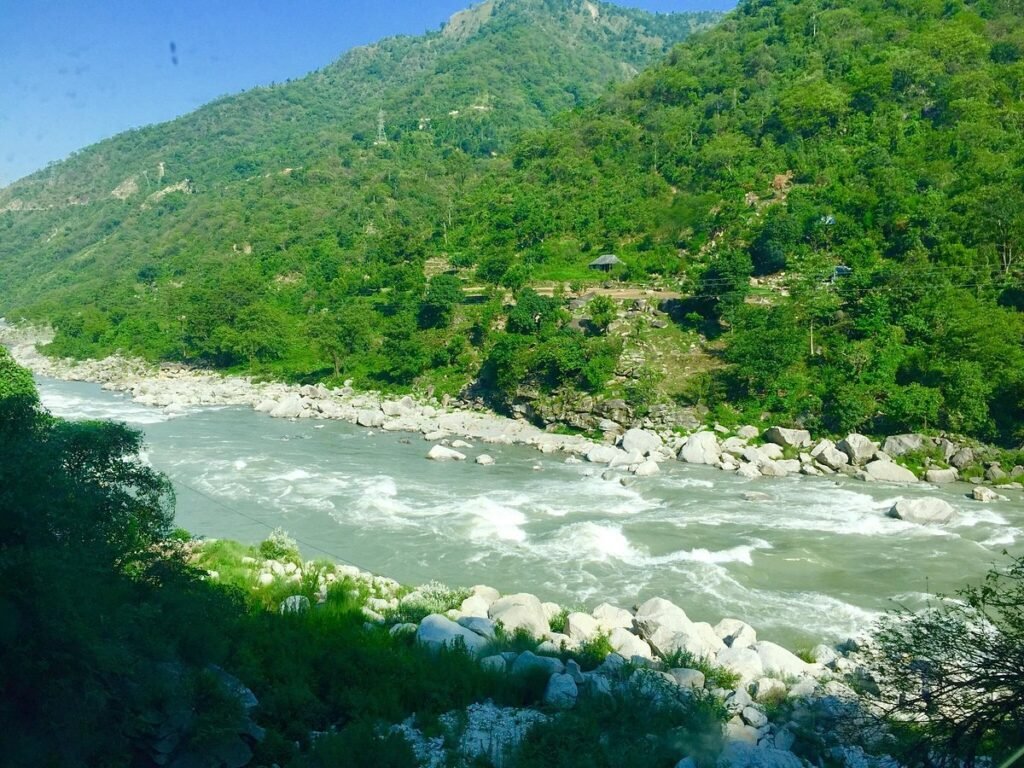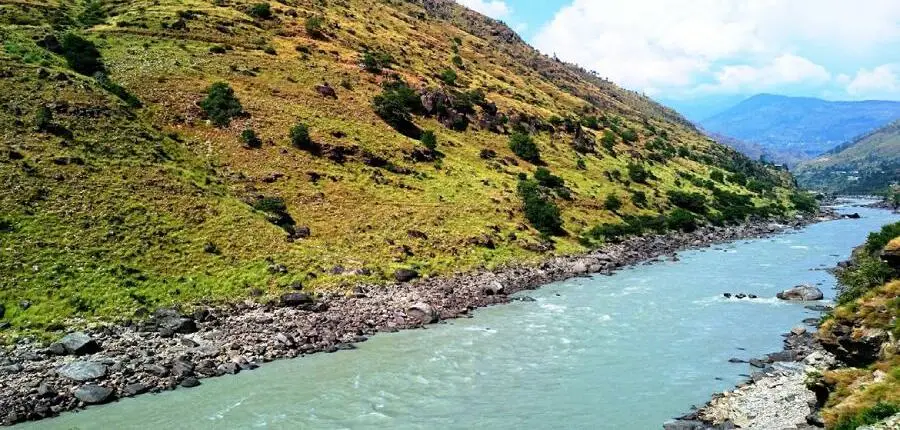Beas River: The Lifeline of Himachal Pradesh
Introduction to the Beas River
The Beas River, originating from the Himalayas in Himachal Pradesh, is a vital waterway known for its significant contribution to the region’s ecology, economy, and culture. Flowing for 470 kilometers, it is a crucial source of water for irrigation, hydroelectric power, and drinking water in Himachal Pradesh and Punjab.
Ecological Significance
The Beas River supports a diverse range of flora and fauna, making it a biodiversity hotspot. The river’s basin is home to numerous species of fish, birds, and mammals. It also plays a pivotal role in sustaining the agricultural activities in the region, ensuring the fertility of the soil and providing water for crops such as wheat, barley, and maize.
Economic Impact
The river is a cornerstone of Himachal Pradesh’s economy. It supports various hydroelectric projects, including the famous Pong Dam, which generate substantial electricity for the region. Additionally, the river is a source of livelihood for many local communities engaged in fishing and tourism. The picturesque riverbanks attract tourists, boosting the local economy through eco-tourism activities like rafting and fishing.
Cultural Importance
The Beas River holds a significant place in the cultural and religious landscape of Himachal Pradesh. It is mentioned in ancient texts and is associated with various legends and myths. The river is often revered in local folklore and is central to many religious ceremonies and festivals.
Conservation Efforts
In recent years, there has been a growing awareness of the need to conserve the Beas River. Various government and non-governmental organizations have initiated programs to protect the river’s ecosystem from pollution and overuse. Efforts are being made to balance developmental activities with ecological sustainability to ensure that the river continues to thrive as the lifeline of Himachal Pradesh.

Why This News is Important
Ecological Balance
The news highlights the importance of the Beas River in maintaining the ecological balance in Himachal Pradesh. Understanding the river’s role can help in formulating policies that protect the environment while promoting sustainable development.
Economic Relevance
For students preparing for government exams, knowing about the Beas River’s economic contributions, particularly in hydroelectric power generation and agriculture, is crucial. This knowledge is essential for questions related to regional development and resource management.
Cultural Significance
The cultural importance of the Beas River underscores the need to preserve our natural heritage. It also helps students appreciate the interconnectedness of nature and culture, which is often a topic in civil service exams.
Conservation Awareness
Awareness about conservation efforts for the Beas River is essential for understanding current environmental policies and initiatives. This information is pertinent for exams focusing on environmental studies and public administration.
Holistic Development
The news piece provides a comprehensive view of how natural resources like rivers can drive holistic development. This understanding is vital for policy-making roles that require balancing economic growth with environmental sustainability.
Historical Context: The Beas River
Ancient References
The Beas River, also known as Vipasha in ancient times, has been mentioned in various historical texts, including the Rigveda. It has been a critical part of the Indian subcontinent’s river system for centuries.
British Era Developments
During the British colonial period, the river was harnessed for irrigation and transportation. The construction of canals and dams in the early 20th century marked the beginning of large-scale utilization of the river for economic purposes.
Post-Independence Era
After India gained independence, the Beas River became a focus for developmental projects. The Beas-Sutlej Link Project, completed in 1977, was a significant milestone that aimed to transfer surplus water from the Beas to the Sutlej River, enhancing the agricultural potential of the region.
Key Takeaways from Beas River: The Lifeline of Himachal Pradesh
| Serial Number | Key Takeaway |
|---|---|
| 1 | The Beas River originates from the Himalayas and flows for 470 kilometers. |
| 2 | It supports biodiversity, agriculture, and hydroelectric projects in Himachal Pradesh. |
| 3 | The river is culturally significant and features in local legends and religious ceremonies. |
| 4 | Conservation efforts are underway to protect the river’s ecosystem from pollution and overuse. |
| 5 | Understanding the Beas River’s importance is crucial for sustainable development and environmental policies. |
Important FAQs for Students from this News
Q1: Where does the Beas River originate?
The Beas River originates from the Beas Kund near Rohtang Pass in the Himalayas, Himachal Pradesh.
Q2: How long is the Beas River?
The Beas River flows for approximately 470 kilometers.
Q3: What are the major uses of the Beas River?
The Beas River is used for irrigation, hydroelectric power generation, drinking water, and tourism.
Q4: What are some key hydroelectric projects on the Beas River?
The Pong Dam and the Beas-Sutlej Link Project are significant hydroelectric projects on the Beas River.
Q5: Why is the Beas River called the lifeline of Himachal Pradesh?
The Beas River is called the lifeline of Himachal Pradesh due to its crucial role in supporting agriculture, generating hydroelectric power, and sustaining biodiversity in the region.
Some Important Current Affairs Links

















